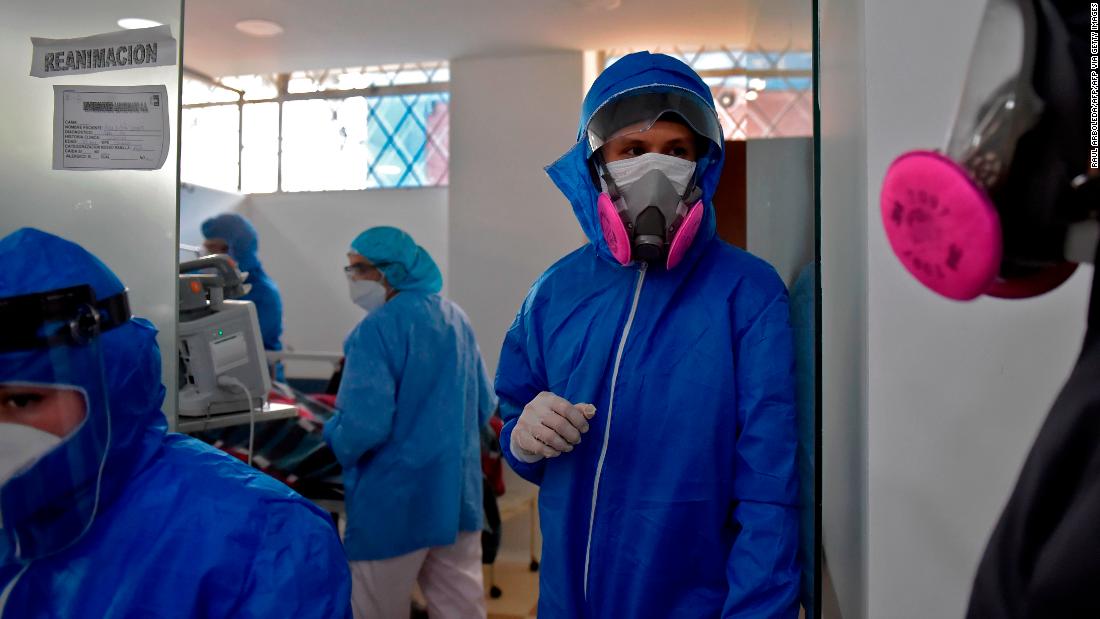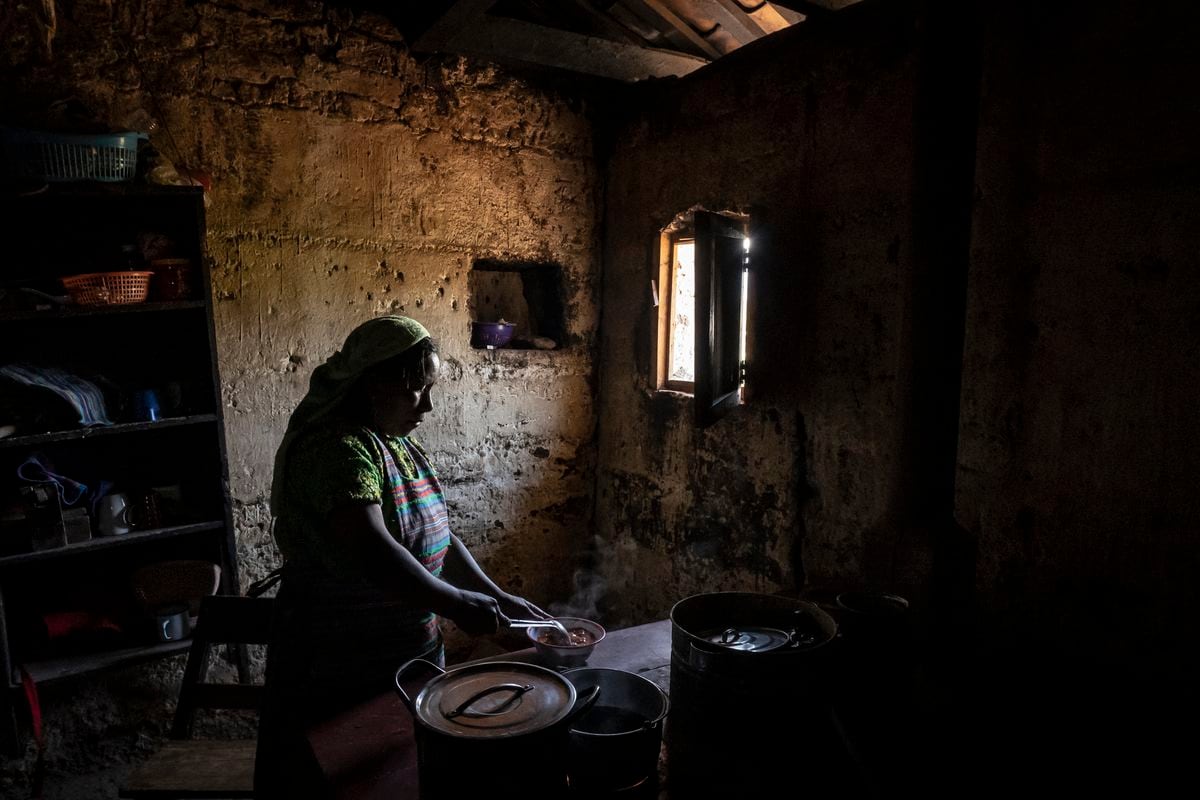(CNN) - Despite the fact that coronavirus cases are increasing in Latin America, another calamity is looming: the sharp contraction of the economies, unsustainable debt and the deepening of inequality could unleash social unrest in the region.
The regional economy in Latin America and the Caribbean is estimated to shrink more than any other region in the world, a contraction of almost 10% this year, according to June forecasts by the International Monetary Fund.
The IMF said that "the rapid spread of the pandemic indicates that measures of social distancing should continue for a longer time, which will depress economic activity in the second half of 2020."
A new UN report goes further: it says that covid-19 could lead to "the worst economic and social crisis in decades, with highly detrimental effects on employment, the fight against poverty and the reduction of inequality."
- MIRA: PAHO recalls historical problems in vaccine distribution and works to reach Latin America
The region had already weakened from years of stagnation before covid-19 arrived. Growth in Latin America and the Caribbean between 2014 and 2019 averaged just 0.4% per year, the lowest since the 1950s. The millions who finally made it to the middle class faced what the Organization for Cooperation and Economic Development called it "a vicious circle of low-quality jobs, poor social protection and volatile income that leaves them at risk of falling back into poverty." One in five of those between the ages of 14 and 25 was looking for but not finding a job.
Now, the pandemic will turn anemic growth into a recession cannon that would throw millions back into poverty.
Health workers in a coronavirus room in Soacha, Colombia, on July 24, 2020
"Latin America came to 2020 as a plane flying with a damaged engine," according to Eric Parrado, chief economist in the Research Department of the Inter-American Development Bank (IDB).
"Then the other one was damaged. Now we are looking for a place to land and save the plane and its passengers, ”she told CNN.
'Closures kill'
Few Latin American countries have 'safety nets' to help in times of crisis, such as unemployment insurance.
Thus, governments face an unpleasant choice between tight, life-saving blockades and short-term economic pain, on the one hand, or trying to keep their economies open, but risking further spread of the coronavirus on the other.
A nurse helps a patient with covid-19 outside a hospital in the city of Arequipa, Peru, on July 23, 2020.
Peru, which closed quickly and early, opted for the first option; Brazil for the second. Last week, Brazilian President Jair Bolsonaro bluntly repeated his opinion: “Without wages and jobs, people die. The closures kill ”.
Mexican President Andrés Manuel López Obrador said in May: "My prediction is that with the coronavirus, a million jobs will be lost."
Keeping economies closed certainly destroys employment and income. The United Nations Economic Commission for Latin America and the Caribbean estimates that almost 30 million more people fall into poverty, defined as an income of less than US $ 5.50 per day, this year. The World Bank says it could be as high as 50 million.
Millions of them will fight to avoid hunger, as crops cannot be harvested or it will cost more to import because the currency depreciates. Poverty also has a long-term effect on the youngest. Less and less nutrition prevents growth; poorer children are less likely to complete their studies and have no chance of receiving an online education.
The 'sudden stops'
Whichever way the countries choose, the great Latin American region will not escape an unprecedented triple shock, what Parrado calls "sudden stops."
Capital: Money quickly flows out of the region as investors extract their money from stocks and bonds. At the same time, remittances from family members abroad, critical for the poorest in Mexico, the Caribbean and Central America, are forecast to decline rapidly. The IDB estimates that they may drop as much as 30% this year alone. In a country like Haiti, where remittances are worth a third of GDP, that is catastrophic.
Commerce: Parrado points out that the region's imports and exports decrease "too fast". Latin America is especially vulnerable because it depends heavily on the export of basic soy, copper and petroleum products. As global demand declines, so does export earnings.
An aerial shot shows a cemetery in the city of Manaus, Brazil, on July 20, 2020.
An example is Peru. In the first quarter of 2020, its exports, which include gold, oil and fishmeal, fell almost 15% in value, as prices and volumes decreased.
Mobility: Confinement and travel restrictions have hurt tourism, a vital source in the Caribbean and Mexico. But most importantly, they have devastated the informal or “gray” economy, on which more than half of the workers depend.
Confinement is a luxury they cannot afford; their job, as housewives, taxi drivers, or street vendors, demands that they leave. That makes them more vulnerable to infection. But as the economic crisis takes more people out of regular jobs and into the informal sector, as the evidence at the moment suggests, there is more competition for less work. It is a vicious circle.
A study in Argentina, one of the region's most sophisticated economies, found that only a quarter of employees could work remotely, while those with lower levels of education, skills, and wages generally could not. And so they join the ranks of the unemployed.
Debt could haunt Latin America even after pandemic
Parrado's triple shock affects Latin America's economy much more than it would with developed economies.
In the absence of a widely available vaccine in the near future, much of the region faces a vicious spiral of weakened currencies and growing debt, which is often denominated in dollars.
According to the UN, several countries, such as Guatemala, El Salvador and Honduras, already spend more on paying their debts than on medical care.
Argentina and Ecuador are in default of their external debt. The research group Capital Economics assures that the debt of Brazil, Colombia and Mexico, three of the most powerful regional economies, increases rapidly in relation to the GDP. Some analysts expect Brazil's debt-to-GDP ratio to rise from 75% to 100% this year, as its economy contracts about 9%. In its favor, Brazil has a relatively low foreign currency debt.
Defending
Governments across the region have taken a series of measures to support the most vulnerable and try to keep companies afloat.
Peru provided an initial cash transfer of approximately US $ 100 to 9 million from the most vulnerable people, followed by more fees, but there were problems getting the money to people without bank accounts. Brazil extended the reach of its Bolsa Familia income support program, and Colombia reinforced its Familias en Acción program.
- MIRA: China offers US $ 1 billion loan to Latin America and the Caribbean for coronavirus vaccines
Last week, the Chilean government allowed people to access up to 10% of their pension in advance to compensate for the difficulties. Across the region, central banks cut interest rates, often nearly to zero. Brazil provides nearly US $ 55 billion in lines of credit to companies.
International lenders like the World Bank and the IDB also collaborate. This week, the IDB granted a $ 130 million loan that will help 12,000 small businesses in Bolivia survive. The IMF provided nearly US $ 5.5 billion in financing to the region, with flexible lines of credit provided to Chile, Peru and Colombia.
But budgets are already stretched; The ability to throw cash into the problem, with license payments, tax exemptions, and healthcare investment, is beyond most countries as their public finances deteriorate.
Austerity - and riots - ahead
Mending your finances means austerity, and austerity delays recovery.
Capital Economics in its latest survey says that Brazil "appears to be ready to implement a rather drastic fiscal austerity in 2021 to address the increase in public debt."
"By the end of 2022, we still think the [Brazilian] economy will be 7% smaller than it would have been if the virus hadn't happened," says Capital Economics.
And austerity can also provoke more protests like those that gripped much of the region in 2019. From Colombia to Haiti and from Bolivia to Chile, popular fury spilled into the streets, the visceral expression of mistrust in the government, which reached around 65% in the entire region.
In 2021, public expectations about the quality of government services will once again be on a collision course with reality, and with chests emptied by the pandemic, there may be little that governments can do about it.
For many economists, Latin America needs to "rebuild better" after the coronavirus and "take seriously fostering innovation and entrepreneurship and competition to address low productivity," in the words of the new World Bank vice president for the region, Carlos Felipe Jaramillo.
But all that requires investment. Before it can dream of a better future, Latin America has to survive the present.
Latin American economy




/cloudfront-eu-central-1.images.arcpublishing.com/prisa/EMYXC3EVHNEG3OJHGIQCB2IVYA.jpg)



/cloudfront-eu-central-1.images.arcpublishing.com/prisa/ETGSMPG4ZNFJFFLVSLKB3DWPSQ.jpg)
